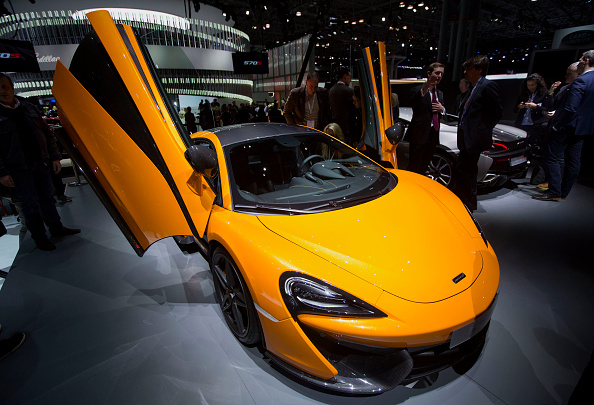

The all-new McLaren 570S marks an “entry-level” supercar that’s part of McLaren’s Sport Series. With a starting price tag under $200,000, the 570S represents a “bargain-basement” McLaren supercar, if you could call it that. Although the baby McLaren does not sport the effective hydraulic anti-roll system in the 650S and 675 LT, or the active aero pack, or the hybrid electric assist in the P1 hypercar, the 570S still makes for one awesome, and brutally performing, ride. For starters, it uses a similar 3.8 liter twin-turbo V8 engine as in almost every other modern McLaren, producing 562 horsepower and 443 lb-ft of torque, propelling the car from 0-60 in 3.1 seconds and onto a top speed in excess of 200 miles per hour. With standard carbon ceramic brakes, all the brawn of the mighty V8 is well under control. Further, the 570S’s light construction contributes to a low curb weight of 3,200 pounds, several hundred pounds lighter than its nearest rival, giving it an edge in power-to-weight numbers. All this performance, and it still keeps the same theatrical butterfly doors and rigid carbon construction, marking it as a proper supercar.
The 570S, and its more upscale 570GT cousin, have been aimed at the “everyday supercar” market. To win over McLaren’s wealthy targeted audience, it must prove to be a more special and enticing experience than other daily drivable machines such as the Audi R8 V10 Plus and the Porsche 911 Turbo S. With its mid-engined layout and feather-light construction, McLaren has created a car with remarkable handling. McLaren engineers specified relatively tiny — for a supercar—225/35 ZR 19 Pirelli P-Zero Corsa tires, reducing unsprung weight and contributing to lighter, more reactive, steering feel. Improved dynamics, greater driver feedback, and even greater fuel efficiency can all be achieved with the lightweight design. Although the 570S does not feature a limited-slip differential or torque vectoring hardware, it effectively uses individual braking of inner wheels during corners to rotate the car and tighten its path around a curve. Although considered to be less elegant than true torque vectoring, the vehicle reportedly feels magical in the bends. With prices already decreasing, will an older McLaren 570S be a tempting proposition in 5 years when compared to a new Carrera S or F-type? Considering how technologically advanced the 570S is, future buyers will surely have to face a tough, but wonderful, decision.